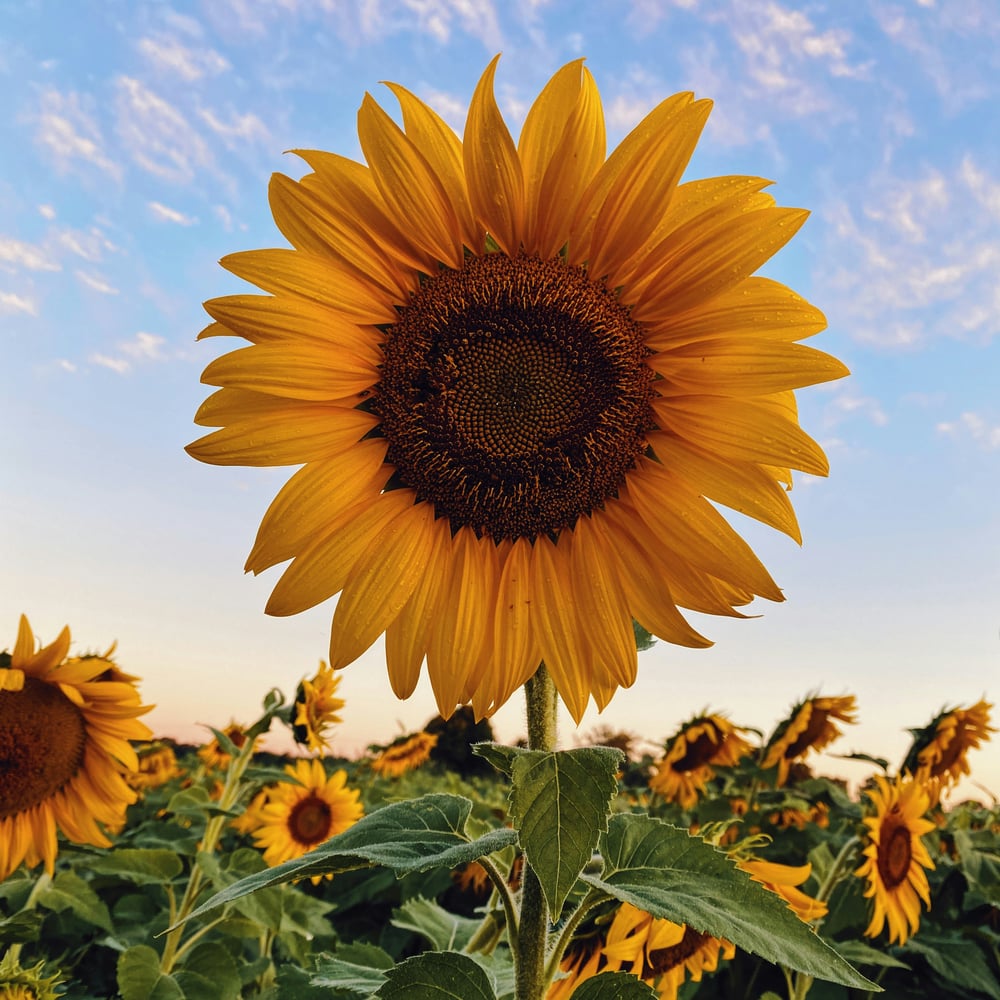Kansas State Flower: Sunflower
 Kansas State Flower: Sunflower
Kansas State Flower: Sunflower
Meet Sunflower
Officially proclaimed Kansas's state flower in 1903, the sunflower is a striking image of the state's agricultural past and natural beauty. Celebrated for their large, colorful blossoms that follow the light, this joyful flower appeals to Kansas's people and captures its core. The robust stalks and strong yellow petals of the sunflower stand for Kansas sun warmth and power and resiliency.
History and Significance
The sunflower's journey to becoming Kansas's state flower is a tale of cultural importance. Chosen on March 30, 1903, it replaced the wild native sunflower species that were prevalent in the area. Kansas agriculture thrives in the fertile soil of the state, hence the selection catches the close contact between the bloom and the business. Long a pillar of local farming, the sunflower symbolizes the devotion and dedication of Kansas farmers who labor meticulously over their fields.
The official choice of this flower emphasizes its relevance not only in the state but also in its character. Celebrated at festivities and events all year long, sunflowers have evolved into symbols of Kansas, stressing the happiness its people have in their agricultural background.
Biological Information
Helianthus annuus, the sunflower, is formally part of the Asteraceae family. Rising to ten feet, this annual plant is known for its height and for having big, up to one foot in diameter flower heads. Every head consists of many little florets, which produce an amazing show drawing pollinators and supplies seeds for other species.
Sunflowers flourish in well-drained, nutrient-rich soil with plenty of sunlight. They are remarkably drought-resistant once established, making them a practical choice for Kansas’s climate. Proper watering during the early growth stages is essential to ensure robust blooms, but once they mature, sunflowers require minimal care.
 Blooming Period
Blooming Period
The blooming period of sunflowers is a highlight of the Kansas landscape. Typically, they bloom from mid-summer to early fall, with the peak season occurring in July and August. Depending on the variety and growing conditions, the flowers can last several weeks, adding a splash of color to the fields and gardens. Factors such as weather, sunlight, and soil quality play significant roles in determining the duration and vibrancy of the blooms.
Meaning, Symbolism, and Representation
Sunflowers carry rich symbolic meanings. They represent adoration, loyalty, and longevity, making them popular in various cultural contexts.
In Kansas, the sunflower serves as a reminder of the state’s agricultural roots and the strength of its communities. It is often used in floral arrangements for celebrations, events, and even as a symbol of hope during challenging times.
Beyond their beauty, sunflowers are integral to Kansas's cultural identity. They inspire art, festivals, and community gatherings, reinforcing the bond between the land and its people. The sight of sprawling sunflower fields can evoke a sense of pride, embodying the spirit and resilience of Kansas.
Shiny Flower of Kansas
The sunflower is more than just a flower; it’s a powerful emblem of Kansas. Its presence enhances the natural landscape and embodies the heart and soul of the state. Each bloom tells a story of perseverance, community, and the vibrant spirit that characterizes Kansas. As we admire the golden petals swaying in the breeze, we are reminded of the enduring charm and strength that define this remarkable region.
Get Your Flowers for Delivery in Kansas







